Part 1 Overview
About the Examinations

The National Registry’s examinations are administered in two formats:
- Computerized Adaptive Testing (CAT)
- Linear Computer-Based Testing (CBT).
A passing standard, identical for all candidates at their level of certification, is used to determine whether a candidate is successful or unsuccessful on the examination.
The National Registry uses the same process to develop all test items. First, external subject matter experts (SMEs) draft an item, also known as a test question. Next, the item goes through an extensive review process to ensure:
-
Correct responses are correct.
-
Incorrect responses are not correct.
-
The item is accurate and important.
-
The question is consistent with widely-accepted evidence and best practices.
-
The content is clinically relevant.
This review process includes internal and external subject matter expert review, referencing, supporting rationales, and editing.
Items are then pilot-tested during live examinations. The National Registry collects enough data from candidate responses to pilot items to estimate each item’s level of difficulty and evaluate the item for evidence of bias and overall performance. The National Registry does not count responses to piloted items towards the candidate’s score. Piloted items that do not meet the National Registry’s strict standards for calibration are revised and re-piloted or discarded. The National Registry places only items that meet rigorous standards as scored questions on the examination.
The difficulty statistic of an item identifies the “ability” necessary to answer an item correctly. The level of ability required to respond to an item correctly may be low, moderate, or high, depending on the estimated difficulty of the test question.
Certification Handbooks
Minimum Passing Standard

The minimum passing standard reflects the knowledge and ability an entry-level competent EMS clinician must demonstrate to practice safely. A passing standard is adopted following the development of each new version of the examination based on an updated practice analysis study and revised examination specifications. The National Registry Board of Directors establishes this standard after reviewing the results of a standard setting study.
The standard setting study, which is conducted using the Modified Angoff Method for the National Registry, is facilitated by psychometricians. In this study, a panel of SMEs assess how a minimally competent candidate would answer examination items. The results of the standard setting study form a recommendation for the passing standard, which the Board considers alongside community impact to set the final standard.
Examination Information
All examination items assess a candidate's ability to apply knowledge to entry-level EMS tasks. Incorrect answers may reflect poor judgment in field assessments or treatments. Poor judgments have the potential to be harmful to patients.
Key points to remember:
-
Examination content adheres to the National EMS Education Standards and the clinician’s scope of practice as defined by the National EMS Scope of Practice Model. Both documents are published by the National Highway Traffic Safety Administration (NHTSA). Examination content avoids regional differences, such as local protocols.
-
The National Registry avoids controversial EMS topics where experts disagree on the best approach.
-
Examinations focus on the latest widely accepted evidence and best-known practices, not specific textbooks. Candidates should consult multiple references, especially in challenging and evolving areas.
-
No advanced computer or typing skills are needed. The examination system is designed for minimal computer experience, and a tutorial is provided.
-
An on-screen calculator is available during all examinations.
Taking Your Examination
The National Registry uses Pearson VUE as its exclusive test provider. Pearson VUE operates two types of testing centers:
-
Pearson VUE Professional Centers (PPCs): Owned and operated by Pearson, located in urban areas.
-
Pearson VUE Testing Centers (PVTCs): Contracted centers in smaller towns and rural areas, increasing access to EMS testing.
Candidates for EMR and EMT can also take their examinations remotely using Pearson VUE’s OnVUE platform.
Learn about OnVUE examinations
Policy for online proctored examinations
Candidates can test at any authorized Pearson VUE center across the U.S., regardless of location. The testing process is consistent at all centers.

